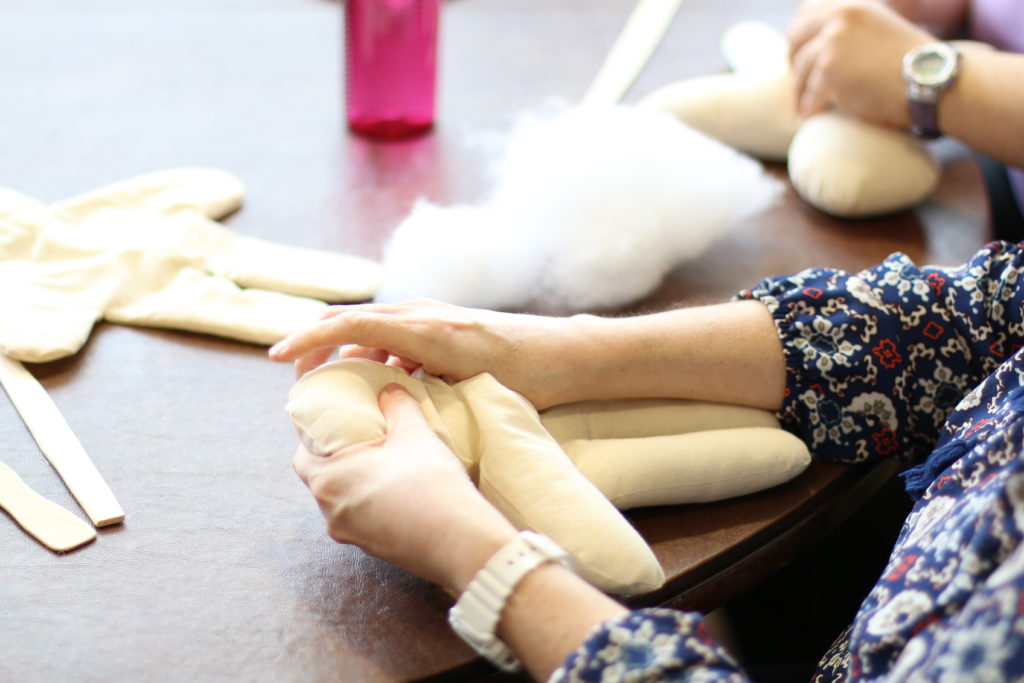
Donated dolls fuel learning
Every week for the past 28 years, a group of women has gathered at Wellington Square United Church in Burlington to make dolls for patients at McMaster Children’s Hospital (MCH). Reading this, you’re likely picturing plush rosy faces with braided yarn hair. In reality, the dolls are much simpler—a blank muslin canvas waiting to come alive in the hands of a child.
The dolls are used by child life specialists for medical play—an important teaching tool that helps young patients understand the medical procedures they may experience at the hospital. The dolls are also a way to build relationships with young patients and create a fun learning environment.
“It always amazes me the creativity and imagination that goes in to each child’s doll,” says child life specialist, Haley Agar. “Personally I have seen children turn their cloth dolls into ninjas, superheroes, and sometimes even a doll version of themselves. The children show so much pride in their creations and this brings medical play to a whole new level. Whether it’s a matching IV, NG tube, port, chest tube, or whatever else it may be that the child is experiencing, having a doll with the same medical needs is often very comforting.”
“I always feel like I get more out of it than I put into it.”
The Dot Gow Ladies, named for the founder of their group, cut, stitch and stuff over 1000 dolls each year. Funded by Wellington Square United Church, they are the sole donor of medical play dolls to MCH.
“To be able to give back is an amazing thing,” says volunteer Liz Olah. “I always feel like I get more out of it than I put into it.”
Child life specialists like Haley use the dolls to demonstrate procedures in a way children can relate to and correct misconceptions about the hospital environment.

“Real medical materials are often used in medical play in order to empower children to have an active role in their own healthcare experiences,” Haley says. “It helps them to learn more about their surroundings and the procedures that they may experience while at the hospital.”
Many young patients keep their dolls long after they leave the hospital, but few know about the dedication and history of the women who craft them.
The Dot Gow Ladies are okay with that. They don’t mind being as anonymous as the faces of the dolls they stitch—as long as their creations continue to help children in need.
